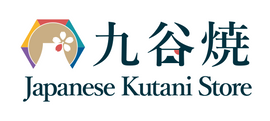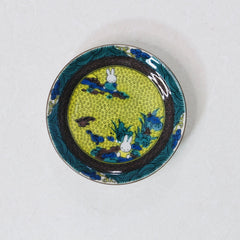The country of Japan is unique with a unique culture. Everything you find there has some sort of unmatched artistry and cute cartoonish characters. Japanese have a rich history of art and wisdom that they preserve in everything they make. It is their way of keeping their stories alive for the generations to come. It is also a way of showing the world their core values.
Kutani has a similar story. The unique Kutani art was revived in the 1800s after a decline in the 1600s. Japanese artists used the Kutani ware and vases to tell stories of their ancestors. Additionally, their literature and stories of their Gods have been told time and again in different ways.
However, one character that made its way into the Japanese culture without being Japanese is Miffy – the rabbit. So who is Miffy and how did it make its way into Kutani art?
All About Miffy
In 1955, Bruna a Dutch father started telling his son Sierk stories about a little rabbit they saw while on holiday. At Egmond Aan Zee, Bruna was on a family vacation when he came up with the character and decided to draw a dress on the rabbit instead of trousers – making Miffy a female rabbit.
According to the stories told to his son Sierk, Miffy can be as young as a little baby or as old as four years. Miffy did not always looked like how she does right now, initially she looked like a toy animal with floppy ears. In 1963, Miffy’s look was improvised and the look was changed to more graphic. The current look of Miffy has minimalist black graphic lines, making it easy for schoolchildren to copy.
Preschoolers in Japan can easily recognize Miffy because of her primary colored dresses with black lines and white fur. Currently, there are 32 Miffy titles and other secondary characters. Bruna successfully created 124 picture books for children, ranging with interesting stories.
Every story is illustrated and written to capture the minds of the young children. Simple stories like going to the hospital and to the school with a happy ending. Some stories do not have words at all, but interesting illustrations like Miffy’s Dream.
The simplicity of each story enables young children to connect with Miffy and other characters. All 124 books by Bruna have been translated to 50 different languages. Moreover, more than 85 million copies have been sold worldwide. Additionally, Bruna won several awards for Miffy and it became a worldwide sensation.
Soon, the TV show was aired in the United States, Canada, Australia and the United Kingdom. All on top channels and was well received. The innocence of the character was once used in the UK for an anti-government rally where Miffy was seen holding an adjustable spanner behind her back. This led to Miffy becoming a mascot for many radical groups around the world.
Miffy in Japan
Miffy is considered Japanese bacuse of its similarities with Hello Kitty. Hello Kitty was designed by Sanrio in 1974 using a similar graphic design as Miffy. The only difference was the name and the animal – Miffy being a rabbit and Hello Kitty being a kitten.
Nevertheless, Miffy is a popular brand in Japan with merchandise worth millions of dollars sold every year. Because Japan takes their merchandise and characters seriously, Japanese made Miffy merchandise sold over $330 million worth in 1999. It was the ninth top selling character in Japan.
Currently, you can see Miffy stores all over the country with merchandise worth hundreds of dollars. Miffy has become part of life for children and adults alike with the character being present in stationary, cutlery and home décor. People even find Miffy on flowers and chocolates on Valentine’s Day.
Miffy Merchandise
Today, Miffy has made its way to brand names and has become an important character in Japan. You will find huge stores dedicated to Miffy with products from everything imaginable. Miffy is a copyrighted character, which cannot be copied by anyone else. Only licensed resellers are allowed to open stores related to Miffy and other characters.
Like other characters and stories of Japanese history, Miffy is also present in Japanese unique art of Kutani ware. The presence of Miffy on Kutani art makes it more Japanese than Dutch. There is no other country in the world where Kutani is manufactured with so much care, love and value.
Any character that makes it to Kutani is considered a surmountable success. The same is true for Miffy, which ironically is not even Japanese. Apart from being present in children’s accessories, it is present in everything for adults as well. Ranging from merchandise from bathroom accessories, to kitchen utensil and grooming kits, you can find Miffy everywhere in Japan.
Let us look at Miffy in Kutani Ware.
Miffy x Kutani Ware
Miffy x Kutani Porcelain Small Plate Aode
This plate is about 4.1 inches wide small dish with a unique yet beautiful bean pattern drawn all over. it is made using three different Kutani techniques. Aode is a technique used in Old Kutani ware with red and green glaze. Followed by Sansai Old Kutani where green, purple and yellow colors are used. Finally, Nisai Old Kutani is used with green and yellow colors. This Kutani Yaki dish is ideal for serving teacakes when entertaining guests.
Miffy x Kutani Porcelain Small Plate Gosai
This unique style with a fish-fin pattern on the borders is a Gosai style of painting, which uses yellow, green, purple, red and dark blue. The free style of painting is a popular Kutani Yaki style of porcelain plates. The painting shows Miffy jumping in between two Japanese mountains with her chicken (another character from the cartoon) drawn on the border. While this is a beautiful plate for serving snacks, it can also be used as a gift.
Miffy x Kutani Porcelain Small Plate Akae
The beautiful red color on the Kutani porcelain comes from the Akae style where the entire vessel has find details. This tiny-detailed design is called Hose-Zukuri where the colors do not bleed easily while enhancing the intricate details of the design. The design shows three windows where in one of them Miffy is standing next to yellow flowers. Another circle shows Miffy playing in the garden while the third one shows the garden. The Akae style of Kutani ware is ideal for being used as a decorative item at home. It is as beautiful as Kutani with Miffy art gets!










